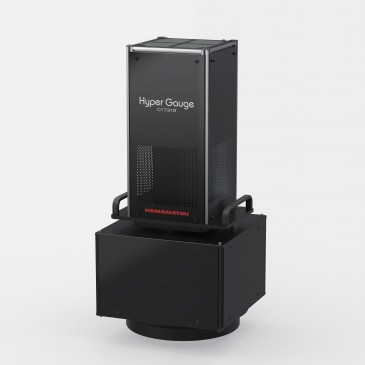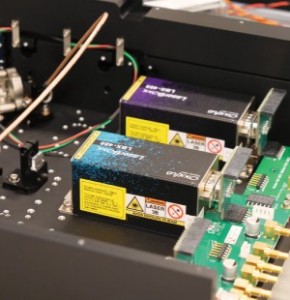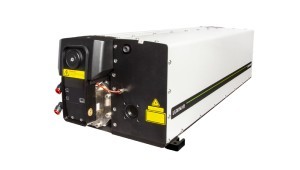
Market Research Future (MRFR) predicts the global sensor market size to reach USD 228.08 billion, registering a 6.22% CAGR from 2019 to 2026 (forecast period).
The integration of sensors into any device improves its functionality, accuracy, and efficiency, increasing its automation. This, in turn, leads to a high growth rate in the sensor market.
The sensor market outlook appears promising, showing significant opportunities in the automotive, consumer electronics, healthcare, industrial, and aerospace & defense industries. Increased automation due to a spurring increase in various industries has an impact on the dynamics of the sensor industry. In addition, emerging trends, such as sensor miniaturization, growing advances in IoT & IIoT technology, and the spread of industry 4.0, and the emergence of 5.0, promote market growth.
Increased use of image sensors in various applications, such as cameras and medicinal devices, advances in gas sensors, and many other sensors, has an influence on the growth of the industry. Owing to the rapid rise in hospitalization, sensors are increasingly being used in medical devices and equipment. In addition, the growing use of sensors in smart grids, smart homes, and intelligent transport systems and developments in information and communication technologies are promoting market development.
COVID-19 impact on the global sensor market
The sensor market has gathered considerable momentum around the globe, largely due to the massive popularity sensors have achieved over the last few years. The outbreak of COVID-19, however, has created barriers to the growth of the market, bringing the world to a halt. With the lockdown imposed owing to the pandemic causing huge revenue losses to end-use industries like healthcare, automotive, electronics, and more, sensor prices got spiked, and the demand was lowered.
Nevertheless, post lockdown limitations getting relaxed with time, the sensor market is steadily increasing again. Innovative market participants have aggressively begun to look for increasing application areas of sensors in monitoring and tracking devices developed for COVID 19. For example, researchers at the University of California have recently announced the development of a wearable sensor that can signal if the user develops COVID-19, even without any symptoms.
Such novel research is proving to be significant in improving the sensor's market share. At the same time, the rising demand for pharmaceutical product packaging and healthcare products to address SARS-CoV-2 could be favorable for the sensor market in the years to come. It is also expected that the product demand in the end-use sectors will be able to pick up after the lockdown in a number of countries.
Market segmentation
The global sensor market has been segmented into type, component, technology, and vertical.
By type, the global sensor market has been segmented into image sensors, optical sensors, humidity sensors, biosensors, motion sensors, temperature sensors, pressure sensors, touch sensors, radar sensors, level sensors, proximity sensors, and other sensors. Of these, the image sensor held the largest share, followed by biosensors and optical sensors, respectively. The rising use of image sensors in smart grids, smart homes, and intelligent transportation systems drive segment growth.
By technology, the global sensor market has been segmented into MEMS, CMOS, NEMS, and others.
Based on the component, the global sensor market has been segmented into transceivers, microcontrollers, ADC, DAC, amplifiers, and others.
By vertical, the global sensor market has been segmented into consumer electronics, industrial, healthcare, automotive, IT & telecom, aerospace & defense, and others. Automotive, construction, healthcare, packaging textile, food & beverage, and others are the top market end-users. In 2018, the top spot was secured by the healthcare segment, on account of the rising uses of smart connected monitoring devices.
APAC to lead the global market
Since 2018, APAC has remained the market leader and has been able to continue its winning streak during the evaluation period. The rising industrial sector and the increasing number of small and medium-sized enterprises (SMEs) in the area are driving sensor market growth. In addition, the increasing use of consumer electronics and medical devices, along with rising production and sales of luxury cars, is boosting market demand in the region. India, Japan, China, and South Korea are the main sensor markets in the region.
Increased demand for sensors due to increased awareness of industrial safety concerns and toxic gases leads to the increase in the market share of humidity and gas sensors. The massive expansion of leading end-use industries such as healthcare, automotive, food & beverage, and packaging and rising automation in the manufacturing sector have an effect on regional market growth. The APAC sensor market is anticipated to post 7.23% of CAGR during the forecast period.
Competitive landscape
The sensor market appears to be highly competitive, given the strong presence of existing industry players. Global suppliers are constantly faced with fierce competition from each other and local companies, which are increasingly aware of the regulations and suppliers in the industry. Eminent players are therefore looking for opportunities to integrate extensively through the extended value chain while concentrating on expanding production facilities, R&D investment, and M&A activities to gain impetus.
BAE Systems plc (UK) is a global defense, security, and aerospace company. Its strategy consists of five main long-term focus areas that will enable the organization to achieve its vision and mission. BAE focuses on sustaining and rising key franchises and ensuring growth opportunities.
Its three strategic goals, which are implemented across the group, provide a link between our long-term strategy and the near-term business objectives for all employees. Recently, on 30th November 2020, the company was awarded a $2.4 billion munitions contract to equip the United Kingdom Armed Forces.
Notable players in The Global 5G Technology Market:
- Robert Bosch GmbH (Germany)
- ABB Group (Switzerland)
- Siemens AG (Germany)
- STMicroelectronics NV (Switzerland)
- Honeywell International Inc. (US)
- Samsung Electronics Co. Ltd. (South Korea)
- DENSO Corporation (Japan)
- Emerson Electric Co. (US)
- General Electric Company (US)
- OmniVision Technologies Inc. (US)
- International Sensor Technology (IST) (US)
- Delphi Technologies PLC (Ireland)
- Texas Instruments Incorporated (US)
- Figaro Engineering Inc. (Japan)
- Alphasense (UK)
- Ametek Inc. (US)
- Drägerwerk AG & Co. KGaA (Germany)
- OMRON Corporation (Japan)
- BAE Systems PLC (UK)
- NXP Semiconductors (Netherlands).




































 Back to News
Back to News



























